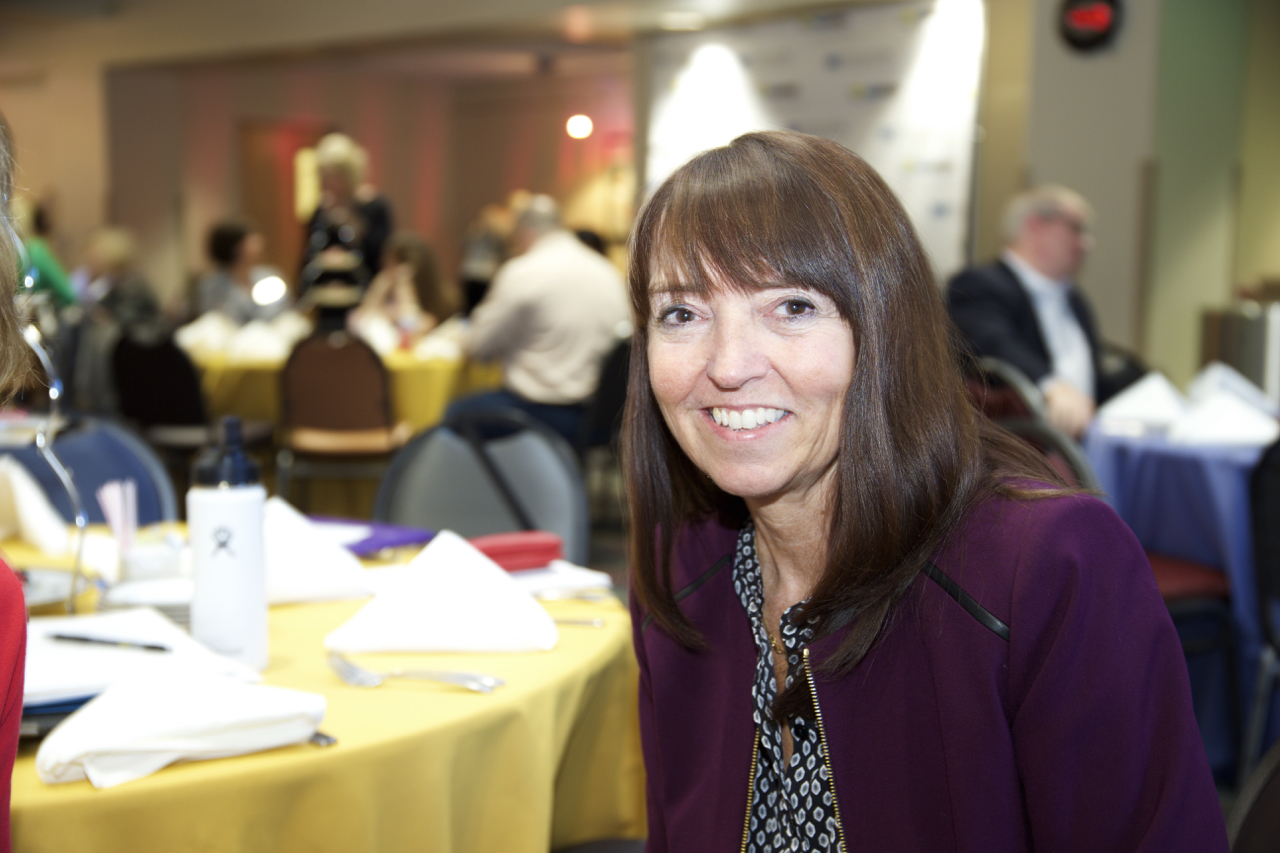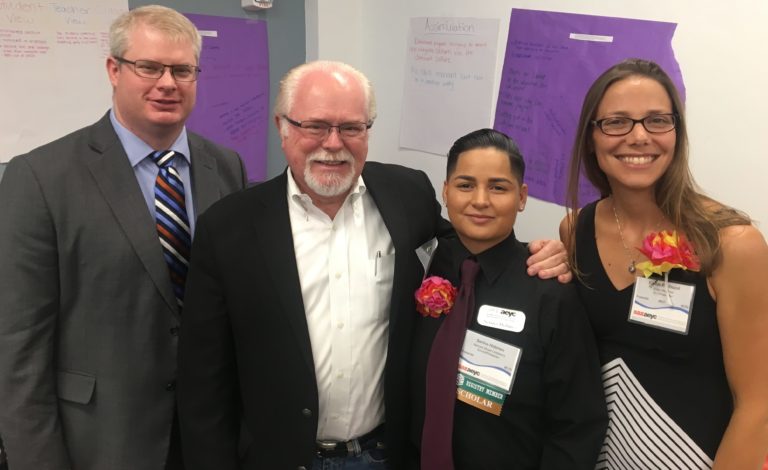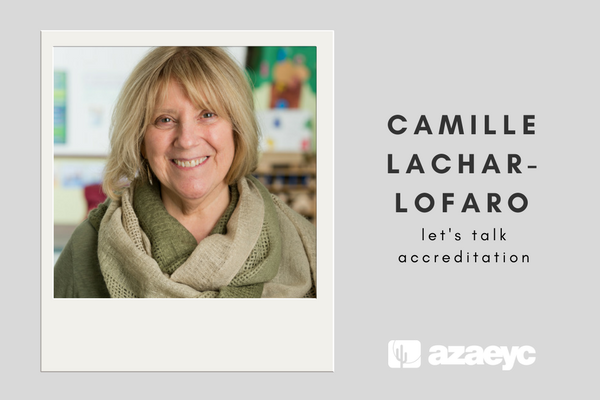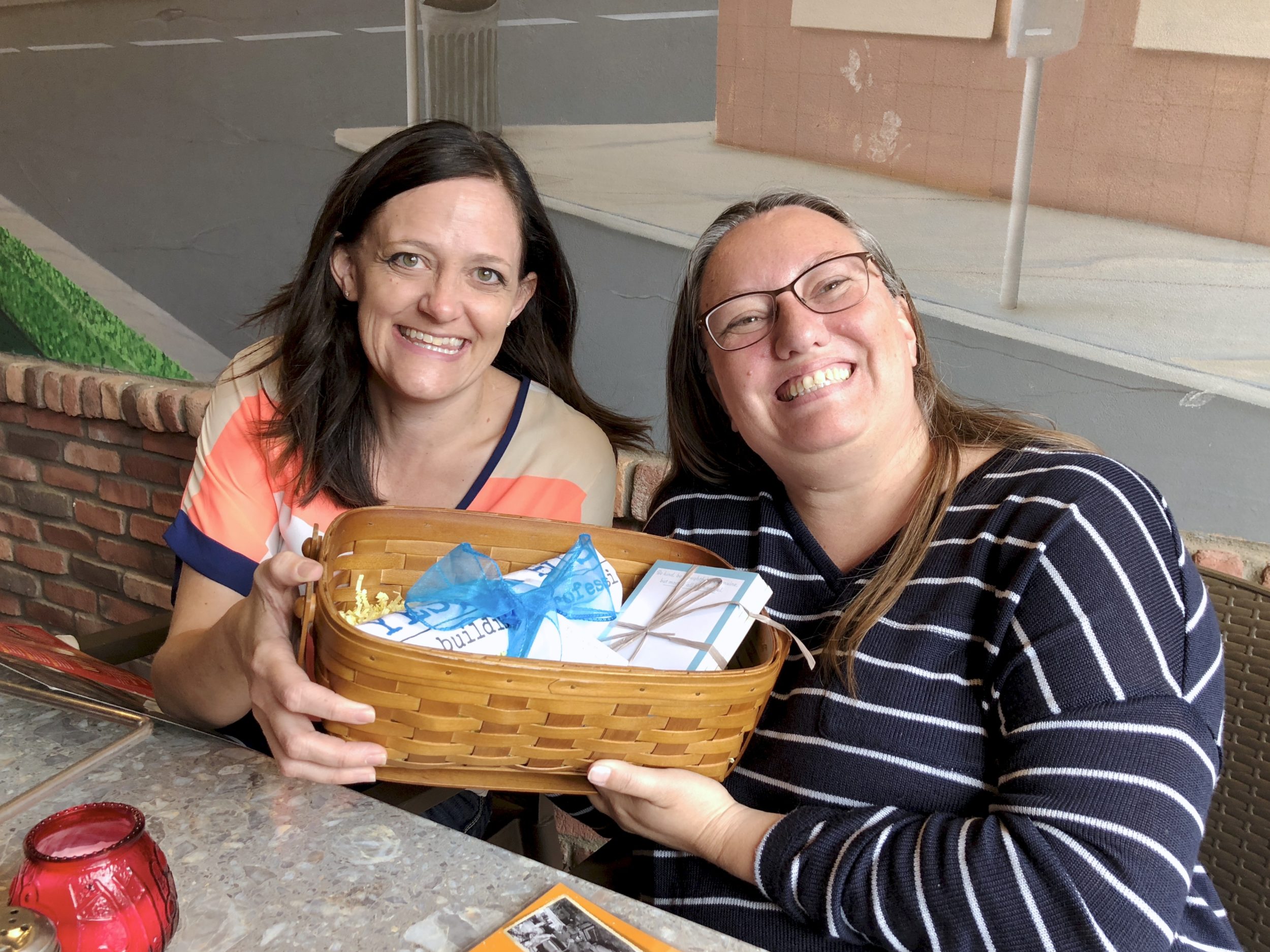A pioneer of implementing the shared services model for early childhood programs, Cellissa Hoyt serves as state director of SELA: State Early Learning Alliance of New Hampshire.
We welcomed Cellissa as our guest speaker at the 2017 AzAEYC Annual Meeting where she spoke about the benefits of building a shared services model in Arizona. AzAEYC’s Vicki Balint caught up with Cellissa to find out more about why directors can benefit from shared services, why pooling resources among early educators raise quality within programs, and what fuels her passion about this work.
Talk about your history with the shared services model in New Hampshire.
I’ve been involved with SELA for around 10 years. I was one of the founding directors during the time I worked at managing Growing Places, a non-profit multi-site early childhood program.
In 2017, the SELA work had grown to the point where I could not do both anymore, so now I do this work full time. I help insure the delivery of services to programs as we work with our business partners and the benefits and resources we have available. I also work on developing even more resources to help early childhood programs.
What brought you to Arizona to speak at the AzAEYC Annual Meeting?
It was a huge honor to be invited. As I’ve gotten more experienced, and our shared services work has evolved in New Hampshire, I’ve gone to a lot of conferences to learn about different shared service models in the country. We’ve actually presented our New Hampshire model a number of times, and when Arizona requested someone from Opportunities Exchange to come and speak, I was delighted to be selected.
What is Opportunities Exchange?
Opportunities Exchange is a nonprofit consulting group co-founded in 2009 by John Weiser of BWB Solutions, and Louise Stoney of the Alliance for Early Childhood Finance, to further the development of shared service alliances in the early childhood sector. About a year and a half ago, Opportunities Exchange asked me to join the team part time to help with other potential shared service groups or emerging interest.
What are your thoughts on what we might expect in Arizona as we spread the word about AZToolkit to the Early Ed community in our state?
So the first thing is, AZToolkit is an amazing platform. People don’t necessarily know that until they get on it and really dig around and see the depth of what is there. And they do that because they prioritize the time, or they are interested to see what is there, or they have a particular need, and they are looking to solve something that is challenging in their program.
It’s a great starting point. Plenty of opportunities exist in Arizona that pull your providers together and your stakeholders together, and those are all places to start building this concept of deeper shared services.
From a center director’s perspective, what might be valuable from digging around within AZToolkit?
I was an executive director for 25 years. There is so much! I’ll give you a few concrete examples. For the business side of our field, say you have a job opening. New hires — interviewing applicants for teacher or admin positions is something that we have to do in our field. Directors can find everything from developing a job posting to ensuring that your job description is updated and accurate. Telephone screening so you can decide whether to meet with the applicant. Conducting the interview, making a hiring decision, reference checking.
The tools are right there. It is very comprehensive.
How does a center director make use of the actual materials from the web platform?
What is terrific about this is that some of these examples, many of them are Word documents that you can download, edit, insert your own logo and customize. There are great templates for communicating with families and the rest of the staff team about the transition that is coming with a new teacher or staff member. There’s an incredibly comprehensive orientation tool with a timeline for tasks to complete after hiring someone new.
If I am a center director, why would I not just Google that and use resources I find online for free?
You absolutely can. But these tools are customized to our field. They are vetted by early childhood professionals. So you know that people in the field have reviewed these tools. They are current, compliant with best practices. They acknowledge what is legal to ask, or what is not legal to ask during a job interview. You don’t necessarily know that when you use Google. Plus, using the tools on a platform such as AZToolkit will save you so much time.
What are some other concrete examples of what shared services platforms offer for classroom supplies?
Saving money is obviously very helpful in an under-resourced industry. It’s so simple. Everything is under one savings tab, you just click on it, right there. You can find supplies through such companies as Constructive Playthings and Discount School Supply and Lakeshore. CCA for Social Good, the group that powers the platform, has already negotiated better pricing for all subscribers. You simply click or call and then place your order.
Many programs serve meals and snacks and other food items, but they may already have established relationships with their vendors. Does subscribing to a shared services web platform such as AZ Toolkit offer these programs an advantage?
For programs ordering food deliveries, CCA for Social Good has developed vendor relationships that save programs thousands of dollars. Very often, a center director may end up using the exact same vendor they currently use. But you are joining this “pooled purchasing,” and we are bundling together, you’ll be eligible for better pricing. And you’re going to save a good amount of money.
Any other benefits to the shared services platform?
There are credit card processing fee reductions and an established relationship with an electronic tuition payment company. There are classroom planning tools, there is a business planning guide, a strategic planning guide, just a whole host of tools that directors need for classroom and quality and best practices. The list goes on and on.
What would you say to a center director who is trying to decide whether to subscribe a platform like #AZToolkit?
That was me, 10 years ago. Thinking, I’ve been doing this work for a couple of decades — thinking, we have some good systems in place. But hey, guess what? We don’t have everything that we need! And what I found when I went to using the web platform was that it actually changed the way I did my job. It made things easier and it saved money.
What were the results of those savings?
The money we saved at the program I managed meant that we could take on some much-needed facility improvement projects. It meant that we saved enough so that I could re-direct that money to payroll, and increase the coverage in one of the preschool classrooms. It basically changed the way I thought about my work. It made it easier to do my job and helped me be more efficient. That means more resources for the kids.
Why do this work around shared services every day?
Hopes and dreams for our field, that’s what drives me! This work is so hard, and so under-resourced. We deserve more, and we need to keep finding ways to provide more resources to programs. For our children, for our communities and the early childhood professionals who are doing this really important work.




